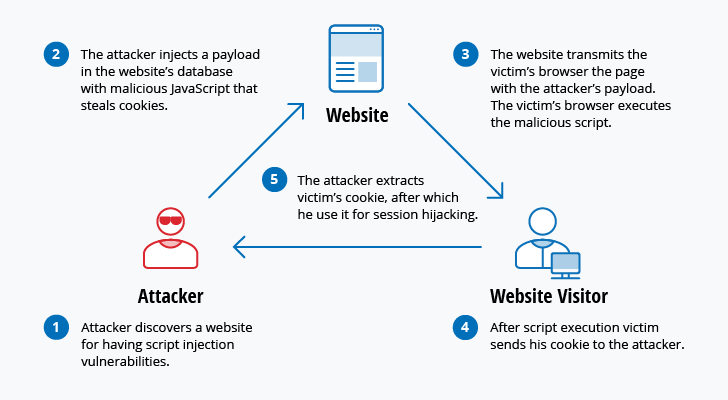- Home
- Blog
ECCouncil CEH V9 312-50 – Enumernation – What Can We Get For Free? Part 2
DNS Enumeration Now, if you recall, the reason that we actually are in this chapter is because the enumeration is what it can give up for free. In other words, we haven’t logged in to our system. It just simply gives this information up and you’ll start to see a lot of information that really we shouldn’t be giving out. Let’s take, for example, SNMP Insecurity. Now, SNMP actually comes in versions one, two, and three, but you’ve got to use the lowest comma denominator in your environment, and that…
ECCouncil CEH V9 312-50 – Enumernation – What Can We Get For Free?
Intro to Enumeration In this section we’ll discuss the definition of enumeration. We’ll discuss grabbing banners, shot in zone transfers, DNS enumeration SNP enumeration and countermeasures null sections. Net BIOS compatible machines as well. Grabbing Banners Now, the first thing we want to talk about in our enumeration chapter is grabbing banners. And grabbing banners is a very common technique because most pieces of software will provide a banner to the client so they know how to configure themselves to be able to make a request. Now the hacker is…
ECCouncil CEH V9 312-50 – Detecting Live Systems – Port Scanning
Introduction to Port Scanning In this section, we’ll discuss port scanning. We’ll give you an intro into port scanning. The TCP IP Stack the TCP Three Step Startup Sequence port scanning Types port scanning tools OS Fingerprinting, Fuzzy Logic and Countermeasures. Introduction to Port Scanning In this introduction to port scanning, we know that scanning is a method for discovering exploitable communication channels. In most network services and programs in use today, they run over TCP IP, which is a network protocol actually designed by an organization called DARPA, part…
ECCouncil CEH V9 312-50 – Cryptography Part 2
Hashing, Hashing Collisions, Common Hash Algorithms The next thing we want to discuss is a hash. And a hash is simply functions that are primarily used to generate fixed length output data that can act as a shortened reference to the original data. So it represents it’s a fingerprint of the original data, if you will. This is useful when the original data is too cumbersome to use in its entirety. One practical use is a data structure called a hash table where the data is stored. Associatively searching linearly…
ECCouncil CEH V9 312-50 – Cryptography
Intro Into Cryptography In this section, we’re going to discuss cryptography. Actually, one of my favorite sections of the entire course. We’ll discuss its implementations. Stream ciphers, block ciphers, the Enigma machine. We’ll discuss asymmetric encryption, hybrid encryption. We’ll compare the two as well as their strength. We’ll look at key exchanges, hashing hashing collisions, common hash algorithms will discuss ransomware, IPsec PKI applications, quantum cryptography and veraquipped. Beginings of Cryptography Encryption has been around a very long time, even since the Roman times. Caesar himself is actually credited with…
CWNP CWSP – Module 06 – SOHO 802.11 Security Part 3
Wi -Fi Protected Setup (WPS) Part4 Now, I mentioned already that we have an inland and out of band configuration mode for the use of this registration protocol. So like I said, when we’re using in band, we’re using Diffi Hellman to create a device password. And if I didn’t say what Diffie Hellman was, let me just see how well I can figure out how to kind of describe it. I’m not going to go through the whole math. But both sides have to agree on what they call…
CWNP CWSP – Module 06 – SOHO 802.11 Security Part 2
Risks of WPA/WPA2 Now, all types of crypto systems do have their own set of risks. And there’s two of them anyway with the WPA and WPA, two Personal. And let me just tell you what that is. The first one is if you have a weak presaged key. I mean, let’s just face it. If it’s weak and it’s easy for somebody to be able to do either a dictionary or brute force attack, like I said before, right? The dictionary attacks or the rainbow tables or the brute…
CWNP CWSP – Module 06 – SOHO 802.11 Security
SOHO 802.11 Security So this module is going to be about 800 and 211 security when it comes to the small office, home office what we call the Soho. So what we’re going to do is we’re going to take a look at those types of security settings that we would use in that smaller enterprise environment and that would be things like WPA, WPA II Personal, the WiFi Protected Setup or WPS. And we’ll also talk about some of the best practices for Soho security. Introduction So one of…
CWNP CWSP – Module 05 – Dynamic Encryption Key Generation Part 5
Steps of the 4 -way Handshake Alright, I love to draw, but I did give you kind of a nice pictorial to look at to again talk about the exchange of this four way handshake. Again, we see the random numbers, the nonces write the A notes helping us derive the transient key or use the transient key to come up with the knots that we’re going to send back in both sides. Like I said, you should come up with that pairwise key. And then again sending the message…
CWNP CWSP – Module 05 – Dynamic Encryption Key Generation Part 4
RSNA Key Hierarchy All right, our goal then of AKM is the creation of encryption keys. And so one of the first things we talked about is that at the top, we have a master key. And from that master key and through the exchange of information, we’re going to have a GroupWise and a pairwise master key. I’ve already gone through this process and talking about what happens and how from those master keys, like that hotel example, that we’re going to create a pairwise transient key for you,…
Popular posts
Recent Posts
- Certified in Risk and Information Systems Control (CRISC): Exam and Salary Analysis
- Certified Kubernetes Administrator (CKA) vs. Certified Kubernetes Application Developer (CKAD): Which Path to Choose?
- Machine Learning and Big Data Analytics: New Content in the Microsoft Certified: Azure AI Engineer Associate Exam
- The New PMP Certification: What’s Changed in PMI’s Approach to Project Management in IT?
- The Impact of AI and Automation on IT Certifications: New Topics Emerging in 2024 Exams











